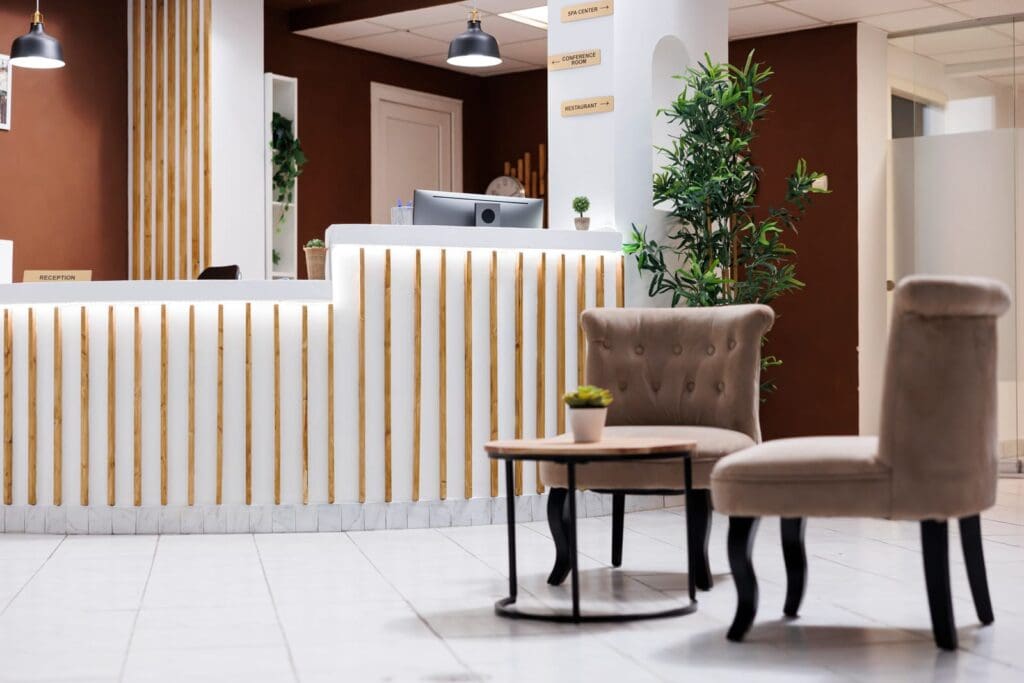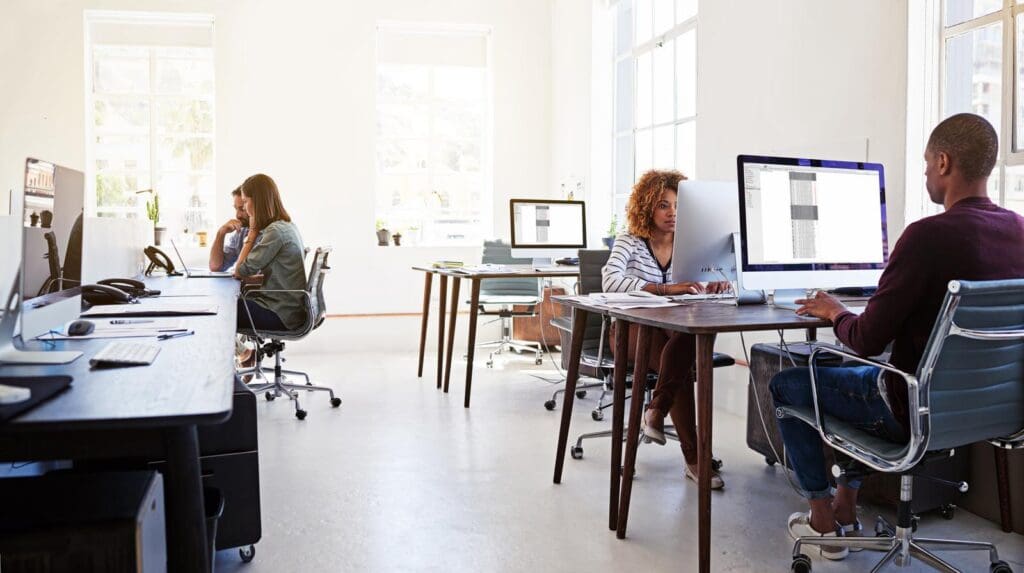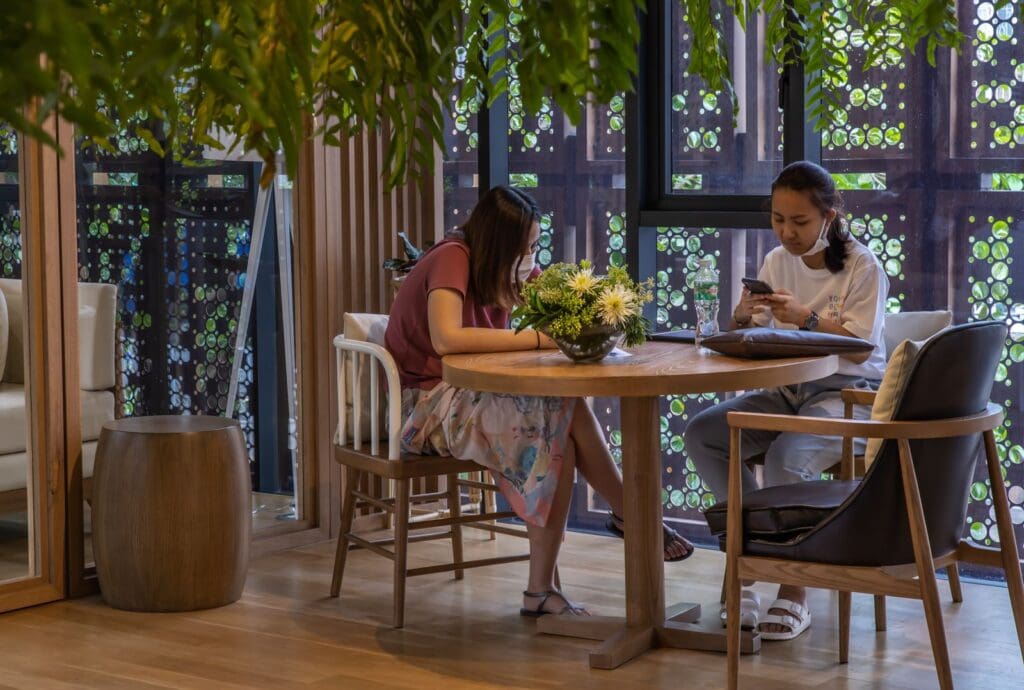Owning and managing a startup can be a thrilling experience. But when it comes to setting up shop, you might want to take a moment and ask, what kind of office space does my startup need? Cubicles and desks with a one-size-fits-all approach are no longer efficient. Your startup is more than just four walls; it is your dream project, your innovation hub.

In November 2023, the US Census Bureau projected a 3.2% increase in appearance of startups compared to the projections for October 2023. Moreover, the advent of technology has brought about a trend of flexibility and adaptability through remote and hybrid work policies. So, get ready to dive into the nitty-gritty of establishing an office presence for your budding startup. Let’s turn those startup dreams into a customized, and efficient workspace!
What kinds of space does a startup require?
Every startup is unique, and space requirements heavily depend on the nature of work. But there are a few things that almost every startup needs, especially if it’s in a service based industry.
Workstations

Desks and cubicles are traditional forms of designated workstations. You can also think of an open layout, if there is more teamwork to be done. You can divide the space into workstations that allow for solitary, focused work, and communal tables where people can work together.
Meeting rooms

Meeting rooms are important for discussing confidential details, meeting with clients and holding seminars or conferences. It is good to have flexible furniture in meeting rooms so that you can rearrange it as per your needs on a day to day basis.
Reception area

The reception area is crucial in forming first impressions when people approach you. A reception desk and a waiting area with chairs and a coffee table is adequate. You may want some space for a water cooler or an indoor plant.
Kitchen or break room

Depending on the number of employees you have, you can decide how much space you want for the break room. A kitchen with a fridge, microwave and kettle will help you store and heat your food and make hot beverages. You can also add a vending machine.
Storage areas
You will need shelves or locked cabinets for safely storing paperwork and important documents. Employees can have lockers or locked drawers and cabinets at their desks for personal belongings. You might also need a designated storage room for office supplies.
Types of Workspace
Traditional Office:
A traditional office typically involves individual workstations and private offices for managers in a centralized building. The layout is highly structured; there are designated areas for different teams and departments. The working hours are regular and there is a formal organizational hierarchy.
Open Office:
In an open office, there are no enclosed offices or cubicles. Employees may work in a shared space with long rows of desks and workstations without high partitions and walls. Such offices have a more casual and collaborative atmosphere and is meant to promote transparency and clear communication among employees.
In a 2019 study, researchers found that the aesthetics of an open plan office had a significant positive impact on productivity and happiness of employees, in comparison with traditional offices.

Sometimes open offices may face challenges like distractions, noise and lack of privacy. If you are considering an open office, you can avoid these by keeping separate areas for focused, solitary work. Such areas are often called quiet zones. They are located in secluded spaces in the form of private offices or enclosed pods.
Co-Working Space:
A co-working space is a shared work environment where people from different organizations work together and use a common pool of resources, amenities and supplies. A co-working space is like a shared office space, except it may go the extra mile to promote collaboration among its members in the form of networking events and online platforms for socialization among users.

The major difference between a co-working space and other types of office spaces is the nature of ownership. Co-working spaces are typically owned and operated by a service provider, and you will be renting out the space and their services for a certain period of time. You may use a co-working space that is open for other users, or you may find one that offers services exclusively for you and your team.
A major advantage of co-working spaces is that they often come with other perks, like administrative services, utilities, office supplies, etc. The exact details depend on what is mentioned in your membership contract. Moreover, if you are using an open co-working space, you will have the opportunity to network with other startups, freelancers, and professionals who may collaborate, or even end up working for you!
How to Choose the Best Location for your Startup?
The location of your office can be a game changer, because it determines your accessibility to suppliers, customers, partners, etc. Start by understanding your needs- who is your target audience, where are your key suppliers located, and what kind of people would you like to collaborate with?
For example, if you are in the tech industry, you might want to be closer to renowned universities and institutions that offer degrees in software. You can partner with them for placements and have easy access to a diverse pool of talented candidates as prospective employees.
Think about your budget and the cost of living in that area. Also consider the convenience of you and your employees in terms of commute. Although choosing a location can seem like an overwhelming decision, don’t forget to listen to your instincts about what feels like the perfect home for your startup.
Lastly, trust your instincts and envision your startup thriving in that location—sometimes, the right vibe can be the most influential factor in making your startup feel right at home.
How Class of Building Affects Rental Rates
Commercial office buildings are generally classified into three categories: Class A, Class B, and Class C. These categories are not set in stone, and there is no body regulating the definitions of what is Class A, B or C. They are just rules of thumb used by real estate agents and buyers to classify properties.
Class A buildings
As the names suggest, class A buildings are considered top tier with modern amenities, high quality construction and locations in central business districts. The amenities typically include concierge services, dining options, daycare centers for children, parking, gyms, etc. to enhance the experience of the tenants.
You will commonly find such areas in New York, San Francisco, Los Angeles, and the like. As you might have guessed, the rent is in the premium range in these buildings, because of the posh neighborhood and advanced infrastructure.
Class B buildings
Class B buildings don’t have the premium features of Class A buildings. They are typically older than Class A buildings. But they are functional and are located well within reach of solid market locations. The amenities available cater to basic needs, like parking, cafeterias, shared outdoor spaces, etc.
Rental rates are more budget-friendly, and suitable for small business or startup owners who want to provide their employees a comfortable modern workspace without spending too much on luxury or high end finishes.
Class C Buildings
Class C buildings are usually not in the best working condition, and need repairs and renovations to become functional. People who opt for Class C buildings prioritize the affordability of the space, and often have plans to upgrade them to Class B in the near future.
Companies that majorly employ people for manual labor or skilled trades in construction, plumbing, security, landscaping, etc. opt for Class C buildings. The rent is the lowest compared to the other two categories. However, you may end up spending more on maintenance costs and amenities.
Interior design
A good interior design combines functionality with creativity to assemble a productive and stimulating work environment. Understand your teams workflow, and arrange the meeting rooms, workstations and collaborative spaces accordingly.
Vibrant colors and natural light are key to creating an energetic atmosphere. Comfortable furniture along with personal touches like inspirational quotes or artwork give an aesthetic touch to the office. As a startup, small teams are able to communicate easier. Use it to your advantage, and discuss the interior design with your employees to make them feel included in the process.
If you are a startup owner looking for an office space, you can go through this article to create a mental checklist of the various factors you need to consider before taking your first step in establishing an office presence. Good luck!


GIPHY App Key not set. Please check settings